To control trace while adding oils, work at cooler temperatures (100-120°F) to slow thickening. Use slow-moving oils like olive or sweet almond in your recipe base. Add essential oils at light trace for even distribution, keeping additions below 3% of total oil weight. Pre-mix fragrances with oils before adding lye to prevent acceleration. Switch to gentle folding motions instead of blending when the mixture begins to thicken. These techniques will transform your soap making experience.
5 Ways to Control Trace While Adding Oils
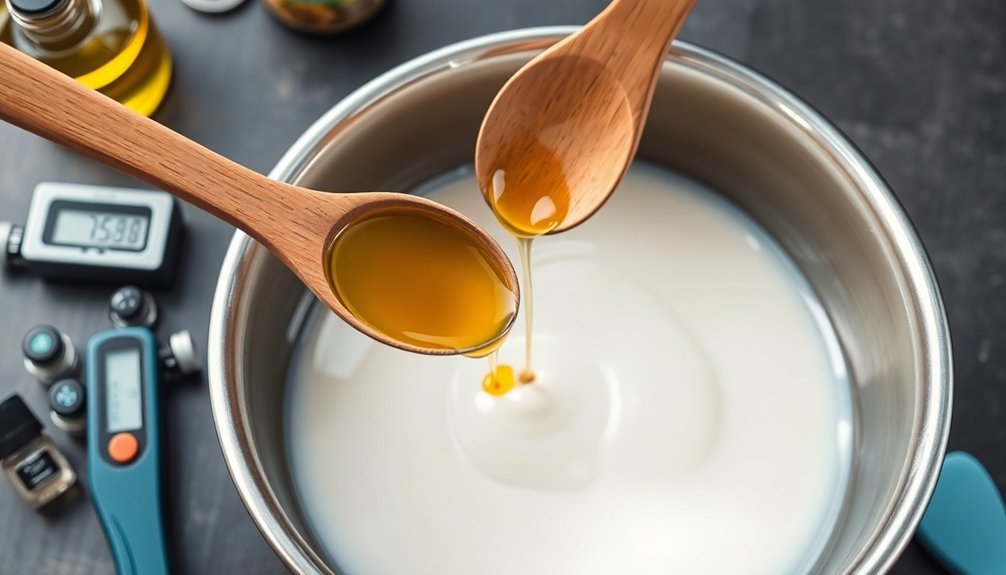
When you're creating intricate soap designs, controlling trace becomes essential for success. Work at cooler temperatures (100-120°F) to slow down thickening and extend your working time.
Incorporate slow-moving oils like olive and sweet almond oil in your formula to manage trace speed effectively.
Add fragrance oils after reaching light trace, using short bursts of a stick blender to prevent rapid acceleration. Consider pre-mixing fragrances with oils before adding lye.
Increase water content by about 10% to mitigate accelerating fragrance oils for a more manageable trace.
Avoid solid oils and butters that cause thick trace; instead, focus on liquid oils.
Guarantee all additives like clays are pre-dispersed in water to reduce their impact on trace speed, giving you more control over your soap's consistency.
Optimal Timing: When to Incorporate Essential Oils for Balanced Trace
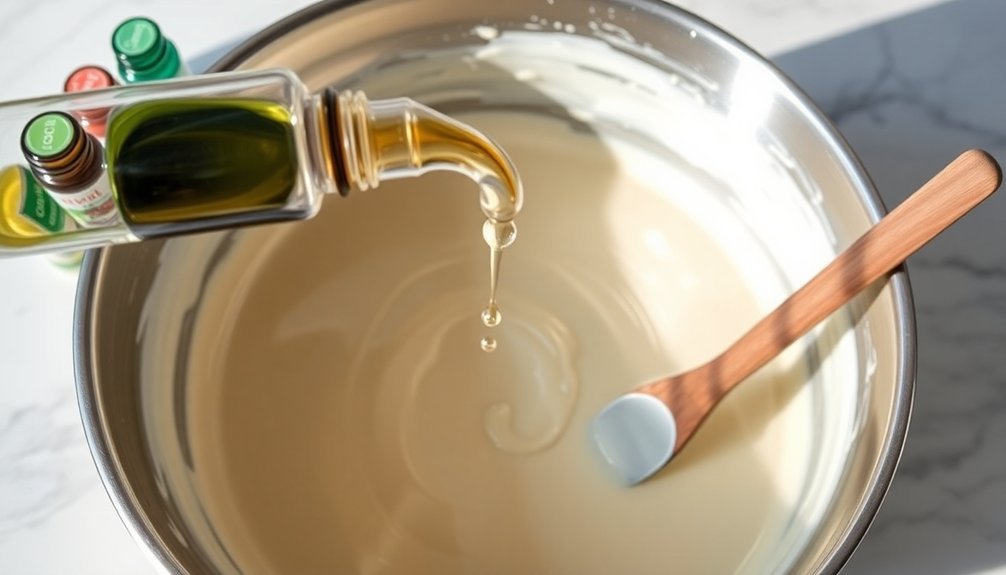
The strategic timing of essential oil addition can make or break your soap design's success. For ideal trace consistency, add your essential oils at light trace—this guarantees even distribution while giving you ample working time for design elements.
Consider mixing essential oils with your base oils before introducing the lye solution to prevent sudden acceleration. Keep your addition rate at or below 3% of total oil weight for safety and performance.
Temperature management plays a significant role in the soapmaking process; cooler temperatures slow trace development, allowing more control as you incorporate your fragrances.
For best results, aim to add essential oils after emulsification but before reaching medium trace. This sweet spot provides enough time to work with swirls or layers without risking separation.
Your superfat level may also influence how quickly trace develops after adding essential oils.
Temperature Management: Cooling Techniques to Slow Trace Progression
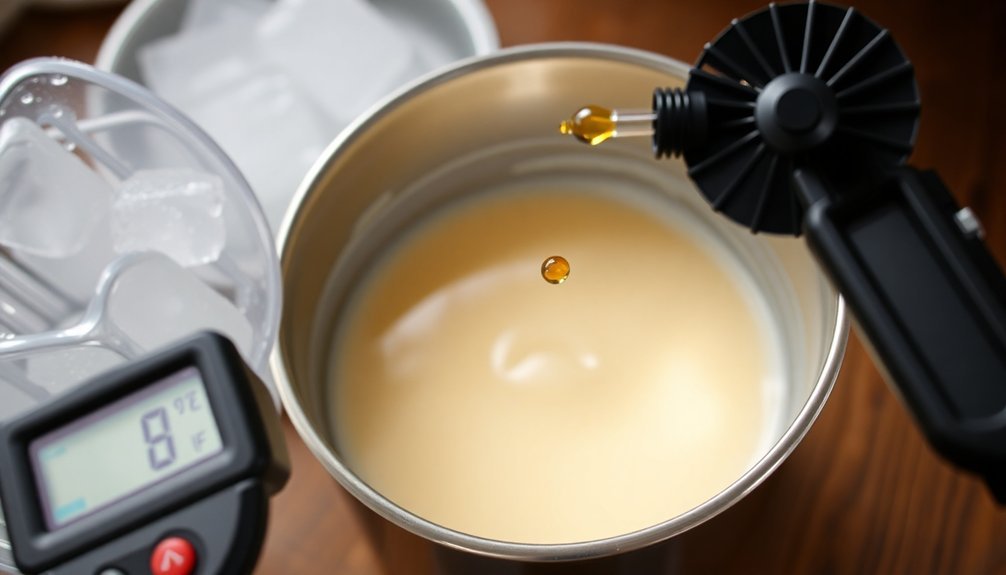
Managing your soap's temperature effectively creates one of the most significant advantages in your control arsenal.
Cooling techniques can dramatically influence trace progression during the saponification process, giving you more working time for intricate designs.
- Cool both oils and lye solution to 100-120°F before combining to prevent rapid thickening, especially when working with accelerating fragrance oils.
- Place your lye solution in an ice bath to lower its temperature, creating ideal conditions for detailed soap designs requiring thin trace.
- Reduce your soap mixture's temperature by 10-15°F during saponification for better control over consistency and flow.
- Incorporate slow-moving oils like olive or rice bran in your oil formulation to naturally extend working time while maintaining consistent temperatures throughout the process.
Stirring Methods: Gentle Folding vs. Blending for Oil Integration
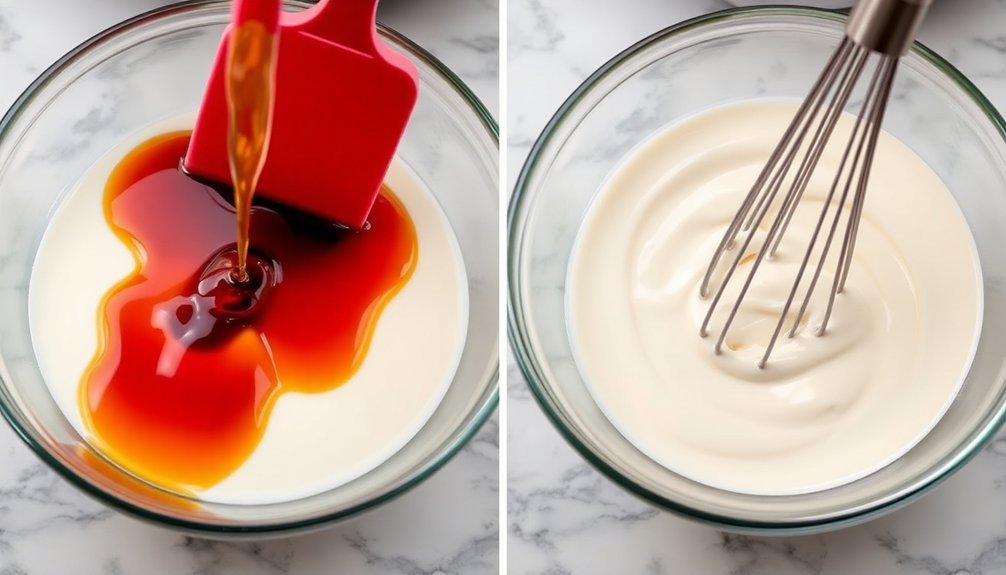
While temperature affects trace development at the molecular level, your physical handling of the mixture plays an equally important role in controlling saponification speed.
Gentle folding with a spatula or whisk helps maintain a thinner trace, giving you more time to work with colorants. This technique creates a smoother texture and more uniform soap batter.
In contrast, blending with a stick blender accelerates trace considerably – use short bursts and monitor closely to avoid over-thickening.
For intricate designs, try alternating between gentle folding and brief blending. This approach guarantees oils remain fully emulsified while maintaining control over your trace.
If you notice your mixture thickening unexpectedly, switch to gentle folding immediately to regain control. Remember that your stirring method directly impacts not only working time but also your final soap's texture.
Strategic Oil Selection: Choosing Slow-Moving Carrier Oils for Stability
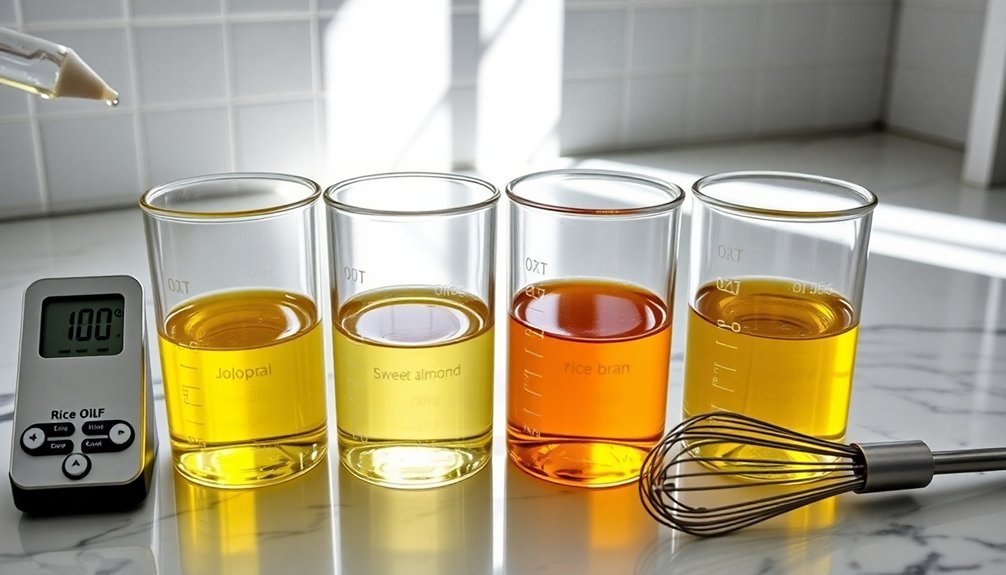
Because your oil selection forms the foundation of your soap's behavior during trace, choosing the right carrier oils can make the difference between a smooth pouring experience and a frustrating race against time.
Slow-moving carrier oils rich in unsaturated fatty acids give you the working time needed for intricate designs.
- Prioritize olive oil, rice bran oil, and sweet almond oil to greatly reduce trace speed compared to solid oils like coconut oil.
- Aim for a recipe composition of 60% slow-moving oils to 40% fast-moving oils for ideal stability.
- Keep fast-moving oils like castor oil at 3% or less in your formulation.
- Work at lower soaping temperatures (100-120°F) to further extend your working time when using slow-moving carrier oils.
Frequently Asked Questions
What Oils Slow Down Trace?
You'll slow down trace by using olive oil, rice bran oil, sweet almond oil, canola oil, and sunflower oil. Keep castor oil under 3%. These unsaturated, liquid oils extend working time in your soap.
How to Slow Down Trace in Soap Making?
To slow down trace in soap making, you'll want to use more olive and almond oils, lower your temperatures to 100-120°F, avoid fast-moving oils, and add fragrances last at minimal percentages.
What Happens if You Pour Soap Before Trace?
If you pour soap before trace, you'll likely end up with separation issues, uneven saponification, and oil pockets in your final bars. Your colorants won't mix properly, and you might face false trace problems.
Why Is My Soap Tracing Too Fast?
Your soap's tracing too fast likely due to high temperatures, acceleration-prone fragrance oils, excessive stick blender use, your recipe containing too many hard oils, or a significant water discount. Try adjusting these factors next time.
In Summary
You've now mastered five essential techniques to control trace during oil addition. By managing your timing, temperature, stirring methods, and oil selections, you'll create more consistent soap batches. Remember, practice makes perfect—don't be discouraged by occasional acceleration. With these strategies in your soapmaking toolkit, you'll confidently handle even the trickiest essential oil combinations while maintaining that perfect trace every time.

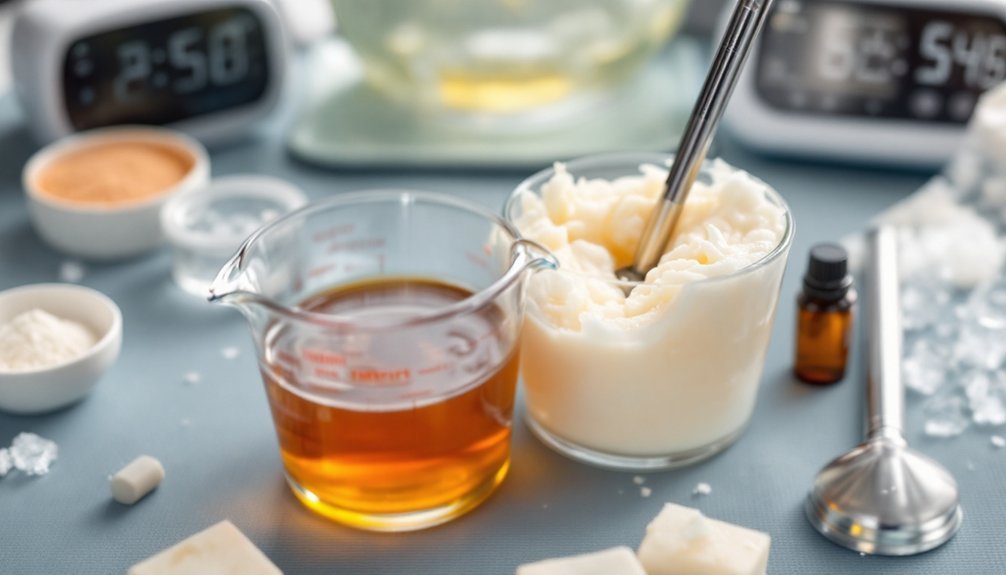



Leave a Reply